#I’ve been researching clothing styles for the time periods
Explore tagged Tumblr posts
Text

Waylan Spark! mostly done, but this is the guy a fae king is willing to chance getting shot in the face for. The photographer who disappeared in 1973, think of this picture as his missing person's photo/ the flashback scenes. This is him days before he vanished. Nora loves braiding his hair, so while he has the long permed flippy hair normally, when at home and when he disappeared he's got it braided. He has the right hook required to defend his long hair, and his sister.
I'll do the picsfor when he's in the forest, and when he's in boss mode. as a boss, Waylan's boss title is "The King's Right Hand"
Waylan's got some parental issues, and struggling with being frustrated with his parents and knowing from the moment his sister was born he was going to have to raise her for the majority of her life. He loves her, he was ready to do so, but he's mostly angry that he was put in that position to begin with. Knowing this is why he was single for so long. Funnily enough while he was aware of the king, and knew he'd take people, he had been lulled into a false sense of security. He'd wandered that forest for years. Nobody in the human world knew the area as well as he did. Turns out the king was only biding his time with Waylan.
Waylan's bosses represent his resentment to his parents and the fear he'll become like them (the woodcutter), his mother abandoning her kids, Nora especially, and not taking her with her (Old Mother Rabbit-who is Tansie Spark, Waylan and Nora's mother), a sense of freedom vs responsibility and being a good brother (the Prince/Graybelle), What he knows is going to happen if he ever lets the king have his way (Heretical Butler), and his sexuality, attraction, and cycle breaking (The Autumn King himself).
like his niece Sloane, Waylan doesn't talk much. At least not to people he doesn't deem worthy, such as Nora, Mauv, or the niblings. If he doesn't recognize someone, or doesn't trust someone, he generally won't speak. He lets his actions speak for him. The king enjoys drawing more than a few words at a time out of him, even if it's usually when Waylan is having a mental breakdown.
this poor man goes through so much shit lol. He's tired and he's trying so hard.
#my oc's#waylan spark#forest blooded#I’ve been researching clothing styles for the time periods#each of the kings victims go missing in#Waylan and Mauv are maybe the most fun?#Waylan is more of a hippy while Mauv is very much into the early goth scene starting in 1969#and their clothes before they go missing reflect their personalities#despite it all Waylan is attracted to the king#I don’t know if I’d call it love but there is some legitimate lust there#maybe if the king saw him as a partner and not a plaything and pet#Waylan would love him as much as the king loves Waylan#Waylan and Maev are the only two humans in the forest who can look on the kings true face and not go insane#there’s definitely a soulmate factor there#but he doesn’t see them as people so what he desperately wants-happiness and love-he’s never getting#he’s incapable of letting them in
7 notes
·
View notes
Note
Hi,
'm writing a novel set in the 1900s, including scenes from WW1. Any tips on maintaining accuracy for that period and writing in the style of novels from that era?
Authentic Portrayal of a Historical Era
If your story is set in another time and place, you'll need to do some research to make sure you get the details accurate. Luckily, there's information available online, in books, and on YouTube of just about every historical era in every place.
I want to take a moment to stress the importance of place, because life in early 1900s New York City would have been a little different from life in early 1900s Sacramento, for example. Likewise, life in an early 1900s Scottish village would be quite different from life in an early 1900s Indian village. So, make sure your general research pertains to the country of your story's setting, and that your specific research is geared toward a specific village, town, city, or region--or at the very least (if your specific location is imaginary) the closest real world proximity. Likewise, it's also very important to take socioeconomic status into account, because once again, life for an early 1900s socialite and her family in Manhattan would be quite different from the early 1900s life of a farmer in rural Manitoba.
When you're doing your research, you'll want to pay close attention to the following details:
-- societal rules and norms -- rules and norms around love and marriage -- role of culture and religion -- clothing, architecture, decor -- food and drink -- music -- customs, traditions, festivals -- typical occupations -- treatment/roles of women -- treatment/roles of children -- typical home life -- government and justice system -- transportation, tools, and weaponry -- notable "pop culture" and current events -- slang, idioms, and popular sayings -- important mythology, folklore, and urban legends
YouTube is a great resource for documentaries and documentary style videos to get a good breakdown of particular topics. Like, for example, let's say one of your characters is a wealthy New York socialite. There are videos on YouTube that will show you how a wealthy American or British woman (for example) would dress in the early 1900s. Likewise, you can watch a video about World War I or anything specific to WWI that you want to learn about.
WQA’s Guide to Internet Research Researching a Historical Topic Setting Your Story in an Unfamiliar Place Writing About Difficult to Research Topics
Happy researching and writing!
•••••••••••••••••••••••••••••••••
I’ve been writing seriously for over 30 years and love to share what I’ve learned. Have a writing question? My inbox is always open!
♦ Questions that violate my ask policies will be deleted! ♦ Please see my master list of top posts before asking ♦ Learn more about WQA here
116 notes
·
View notes
Text
hi! i wrote an essay about rosy ronkey and her clothes, and i hypothesized what time period i think shes from/inspired by ^^ below if you wanna read more :))
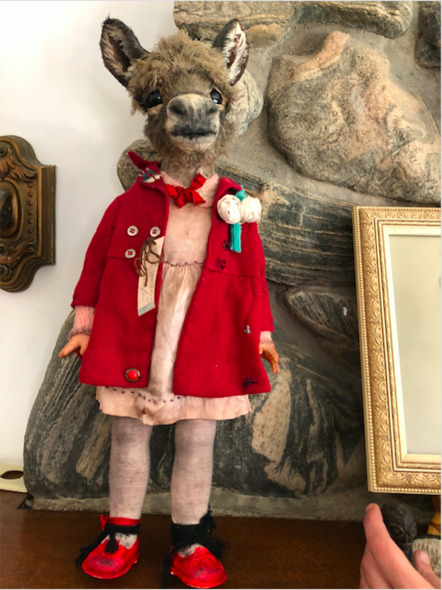
ive been fixated (or had a special interest or whatever you want to call it) on rosy ronkey for a YEAR today. i've always been pretty interested in her outfit from an aesthetically pleasing point of view, but recently i wanted to see if i could find any trends and time periods in the inspirations of her clothes, which is what this essay is about! it’s going to be an explanation of most of her clothes, top to bottom, from what i can assume with the research i've done. i say research, but i probably don’t have the best sources? they’ll be linked below, but it was really more cross-referencing than anything else lol
i reached out to annie montgomerie for comment/criticism, but she’s obviously very busy and i enjoyed my research from a subjective point of view :)
basic specs on rosy (no one else but me cares): looking at rosy, the only zoomorphic, or animal looking, aspect of hers is her head. judging by proportions and cross-referencing, she looks to have the body of an american girl doll. this is just what i’ve noticed, but annie’s most recent stuff is way less anthropomorphized compared to rosy and the group she was made with. looking at annie’s most recent exhibit, hand me downs, every single piece is completely animal, with hand-sculpted claws, paws, wings and hooves. some of these dolls legs still look like american girl doll legs, but most everything else is animalistic. this isn’t important, but i just thought id mention it because artists’ growth over time is cool!
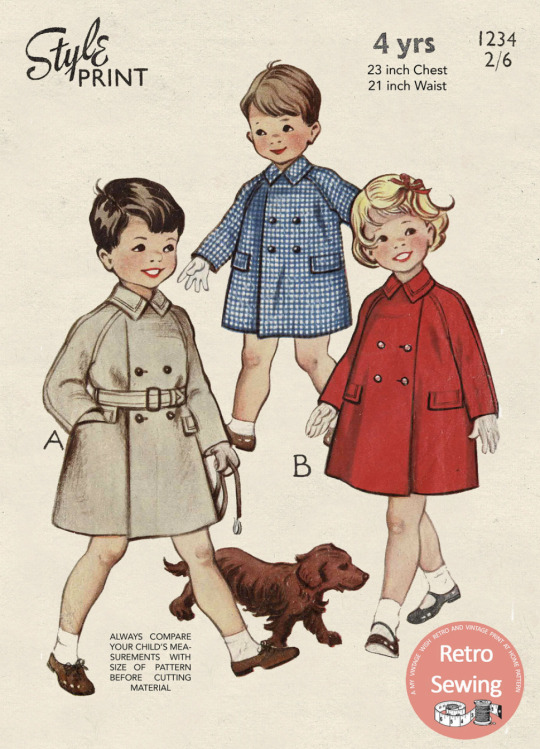
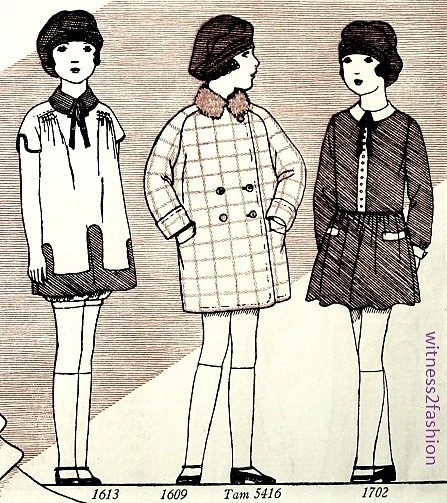
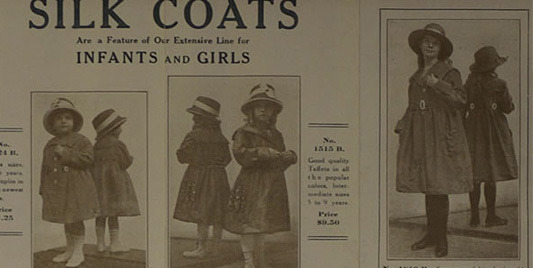
starting with her coat, it looks like a double-breasted red childrens’ coat with two rows of two buttons each. these kinds of coats are still available today, but i could find the closest matches by looking at 1920s childrens’ coats, specifically rothschild coats. the rothschild family has a long and complicated history, but all that’s important to know is that they are new york based (which doesn’t totally fit my assumptions about her; in general i assume all of annie montgomerie’s dolls are british because of her nationality) and they’ve been in business for over 100 years. by cross-referencing the growing style of double-breasted coats in the 1920s, and the style of rothschild childrens’ coats in ads from the time, i feel like it’s easy to assume rosy's character has this coat, or at least was very heavily inspired by it.
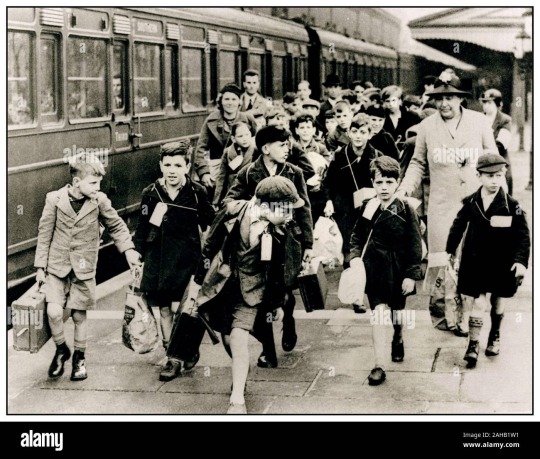
a theory i’ve seen before is that the ticket on her coat is a luggage label. these were used during WWII to evacuate british children during the blitz. the history press site says luggage labels listed “name, school and evacuation authority,” and is also where i got most of my information. i want to tentatively deny this theory. i'm pretty sure the ticket is an annie montgomerie staple opposed to a part of rosys' character. she's shown with the tag in the yorkshire sculpture park video, and on gerard way’s website, but she’s missing it in all the photos posted by annie montgomerie herself on facebook and instagram. almost every single annie montgomerie piece on display or for sale has a tag as well. i love this theory, and it’s probably what got me interested in researching her outfit in the first place, but i don’t think i could prove it if i tried.
other than the ticket, she has white roses on the left side of her coat and some smaller twigs? sticks? pinned to her collar. white roses symbolize purity, youthfulness, innocence, and in some contexts, respect for the departed. i couldn’t find any historical photos of children with roses in their outfits, but across the board that was the result i got for their meaning. i can’t discern what she has on her right collar for the life of me, if someone else can figure this out, PLEASE tell me
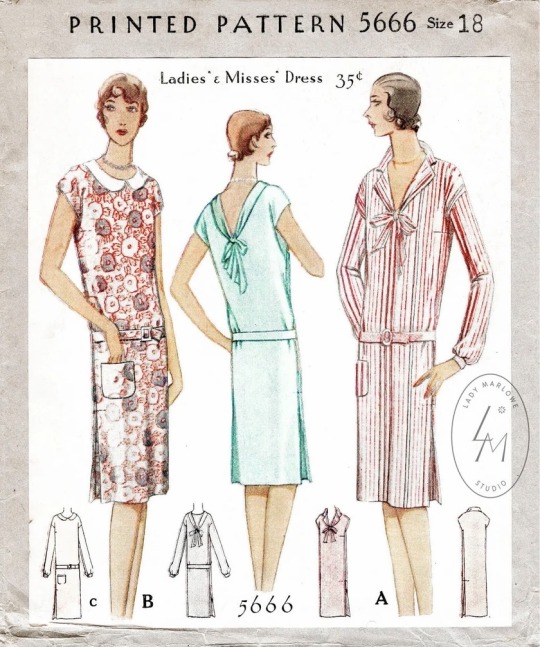
her dress is pink, with a cinched embroidered waist and a peter pan collar. peter pan collars became popular in the 1920s, and have been a staple of childrens’ dresses since (sources for this one were a few blogs and wikipedia, but also some ads, so i feel pretty confident with it.) some ads for girls’ dresses in the 1920s had the same soft pleats and embroidered waist as seen on rosys’ dress. i don’t think there’s a meaning behind the color, except that it compliments the red coat and her fur.
her stockings are standard, I couldn’t find much special meaning behind them, british children have been wearing stockings forever, and for girls especially, stockings became more popular in the 1920s as dresses got shorter. usually they were sheer and nude, and rosys’ look like the gray kind kids wear today, but i think it’s still period appropriate to an extent. her shoes look like red mary janes for american girl dolls, just more scuffed and dirtied. mary jane shoes themselves have been around for a while (called “bar shoes” originally,) but they got their name in 1904. in one of the first drafts for this, i read the fairy tale “the red shoes” to see if it offered any insight. i thought it’d be fun to relate, but it’s just a popular danish fairy tale, and it was hard for me to entertain the idea for long.
TLDR: i think rosy ronkeys outfit is inspired by british 1920s fashion!
that’s all I have! i apologize if this was underwhelming or overwhelming or whatever, i had no model to base this off of and the only tumblr essays i read are from my friends <3 i hope you enjoyed! i love rosy ronkey!
link to my dumbfuck google doc with all the links and braindump on it :)
203 notes
·
View notes
Text
PRETTY SISSY ACADEMY
SISSY COMMUNITY. ONLINE FEMININTY TRAINING. SISSY HOLIDAY. FEMINIZATION WORKSHOPS
Telagram@prettysissyacademy1
10 Sissy Experience Levels Explained
So, you just started your sissification journey. Or maybe you’re a bit further along, but still, you wonder: where is it all going? What is behind the corner? I’ve been training sissies at all experience levels for a few years now, and I’ve identified several stages that most go through. Let’s go through them together.
Curious/Closeted. The beginning of the journey.
The first stage is marked by curiosity. Girls find themselves thinking about dressing up in feminine clothes and wearing makeup but have not yet taken action. This stage is characterized by internal fantasies, porn consumption and intensive online research. It’s a period of self-reflection and questioning, where one’s desires begin to surface, often accompanied by a mix of excitement and apprehension. For many, this is a critical phase of self-discovery that sets the stage for future exploration.
Experimenting. First steps.
As curiosity grows, the next step is experimenting. At this stage, girls start trying on clothes and makeup in private, still keeping these activities hidden from others. This is a time of personal experimentation where one can explore different looks and styles. The thrill of trying something new is often coupled with the anxiety of being found out, but it’s also an essential phase that helps individuals understand their inclinations and preferences. For those still closeted, purges can happen often and the fear of being found out can be overwhelming.
Conflicted Feelings. The moment of truth.
Before moving to full public appearance, many ladies experience a stage where they feel conflicted about their desires. They may want to dress more openly but are held back by fear of societal judgement or personal relationships. This stage is about resolving internal conflicts and deciding whether to embrace this aspect of their identity more openly.
Public Appearance. Stepping out.
For those who choose to embrace their femininity more openly, the next stage is making a public appearance. This involves dressing up in public settings, especially if they’re deep in the kink/fetish community. Taking this step requires a significant amount of courage and self-confidence. It’s often a liberating experience that allows sissies to express their true selves more openly and can be a crucial step in finding community and acceptance.
Submission. Exploring kink.
As a sissy delve deeper into her identity, some may find themselves embracing submission. This stage involves accepting the role of being submissive, acknowledging that they are more comfortable and fulfilled in a submissive position. It’s a significant evolution in self-acceptance where one begins to explore power dynamics and the fulfillment they find in these roles. This often start with intensive participation in online BDSM communities, roleplaying, and fantasizing.
Service. Seeking dominant partners.
For those whose journey continues, seeking dominant partners to serve is the next step. In this stage, ladies not only embrace their submissive nature but actively seek relationships where they can fulfill their partners’ desires, whether through acts of service, completing tasks, or providing sexual pleasure. This stage is about finding harmony and mutual satisfaction in power-exchange relationships.
Owned: deep D/s relationship.
For some, the culmination of this journey may result in an owned dynamic, where they enter a deeply committed D/s (Dominant/submissive) relationship. This can include 24/7 submission and might also involve wearing chastity devices. This stage is about a deep level of trust and dedication to a dominant partner, fully embracing a lifestyle centered around submission.
Total Bimbo: complete transformation.
The final stage is total transformation. Here, sissy-girl fully embraces being a bimbo, often seeking financial compensation for their services, having sex with dominant men, and following all orders from a mistress. This stage is about complete immersion in their chosen identity, fully embodying the role they’ve embraced.
It’s important to now that this journey does not look the same for everyone. And not everyone has to all the way down to level 10! Stick to what feel natural to you, get rid of the unnecessary guilt you feel, seek for accepting people and I am sure that you’ll be a fabulous girl!
#sissy for bbc#beta sissy#faggot sissy#female hysteria#feminine sissy#feminization captions#forced feminized#humiliated sissy#hyper feminine#sissi femboi#submisive sissy#beta slave#simblr
25 notes
·
View notes
Text
Historical Fashion in The Priory of the Orange Tree
I'm not a historian, but I've spent a significant amount of time over the past decade researching historical fashions from across the world. Naturally, this colored my reading of The Priory of the Orange Tree when I first read it in 2019. I started rereading Priory this month in anticipation for the release of the sequel, and I thought it would be fun to share my ideas for the clothing styles of the various countries in the book, based on real-world historical fashion. I also wanted to use this as a moment to compare some of the fashions of Priory with those in the forthcoming A Day of Fallen Night. These are by no means definitive; they're just my personal headcanons for the book, but I thought some fans and artists would appreciate this as a reference.
To begin, Inys and Queen Sabran's court reminded me heavily of Elizabethan England, so while reading Priory, I mostly thought of the book taking place in an analogue to Earth of the mid-to-late 1500s. This colors my perception of the various clothing styles, so you will notice that most of the countries will have clothing from the same century or thereabout. This extends to Fallen Night, which takes place 500 years earlier, but only for the countries that I was able to find enough reference information on. (Trying to find fashion references for eleventh and twelfth century Europe and Africa on the internet is very difficult!) I've made (terrible; I am not a graphic designer) collages to lower the photo count in this post, but please keep in mind that this post is still image-heavy.
SEIIKI
Seiiki is based off of Edo-era Japan. In keeping with the 1500s theme, I have imagined fashions similar to those of the very early Edo period and the late Azuchi-Momoyama period. With how they are described in the text, I believe the wealthy and fashionable in Ginura would likely dress more like the fashions from the early 1700s with elaborate nihongami and extensive sea-themed accessories.

For A Day of Fallen Night, this would land us squarely in the Heian era, my personal favorite of the Japanese historical eras in terms of fashion. Now I can only imagine Princess Dumai with extremely long hair lmao.

SEPUL
Sepul is based off of Korea. We don't know much about Sepul, but for Korea, the 1500s would have been towards the beginning of the Joseon dynasty. 16th century hanbok looked more similar to the hanbok of Goryeo, as opposed to the more "classical" 18th century style of Joseon hanbok that is used today in film and re-enactments.
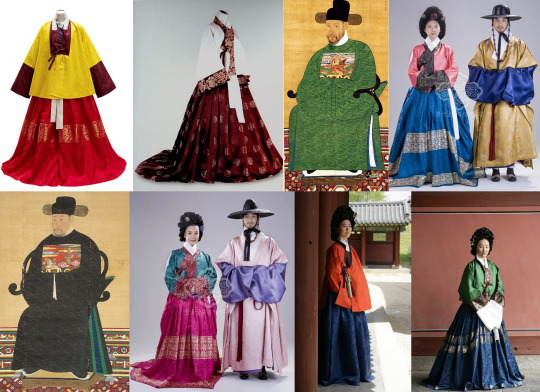
For Fallen Night, that puts Sepul in the middle of the Goryeo dynasty, when it followed Song dynasty fashion. However, Sepul is a queendom, and during the Silla period, Korea had three regnant queens. Because of this, I imagine that the queens of Sepul would likely dress more similar to the royalty of Silla, with their elaborate crowns and gold chains.
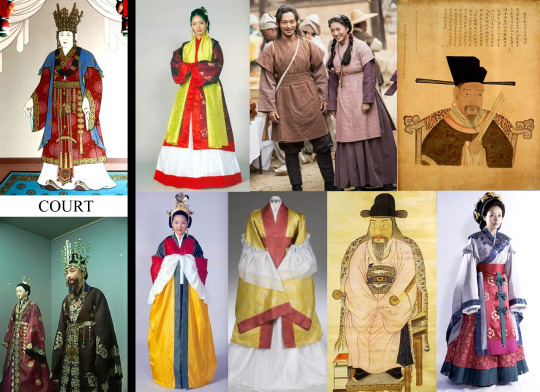
EMPIRE OF THE TWELVE LAKES
The Lacustrine are based off of China, and the 1500s lands us in the later half of my favorite Chinese dynasty: the Ming. We don't get to see much of the Empire, but what we do see is very lavish and grand, much like Ming dynasty hanfu itself.

500 years back lands us in the Song dynasty. One of the interesting trends of the Song dynasty was pearl makeup, something that would likely be popular in the Twelve Lakes due to the continent's general aquatic theme.

INYS
Inys is based off of England, and while reading I imagined something similar to the fashions of the 1560s and 1570s during Queen Elizabeth I's reign. I'd also imagine that Inys would be "behind" in terms of fashion compared to Mentendon, due to how Inysh society and fashion is described as more conservative.

MENTENDON
Mentendon is based off of the Netherlands, and I particularly imagined it similar to the Dutch Republic, especially in regards to the country's relationship with Seiiki. The Dutch began trading with Japan in the early 1600s, so much of my headcanon for Mentendon is based off of the Baroque era, particularly the 1630s and 1640s. Mentendon seems to be the most liberal nation of the West, so I'd imagine their fashions to be more forward-facing while still retaining a lot of the similarities to the Elizabethan era, such as the usage of lace ruffs, doublets, and kirtles. Aubrecht and Truyde are described as having long, loose, curling hair, which fits perfectly with the popular hairstyles of these decades.

YSCALIN
Spain was the inspiration for Yscalin, and I imagined something similar to the 1540s and 1550s, particularly modeled after renaissance Italy as opposed to the Tudor stylings of the English and French.
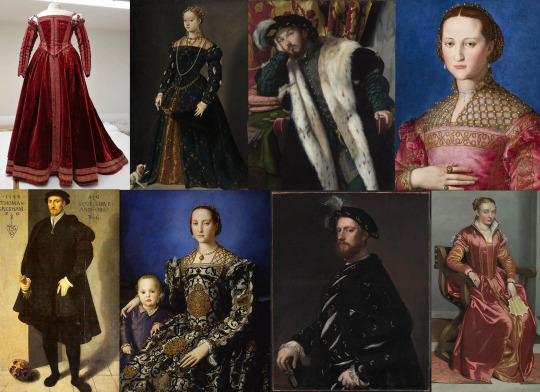
LASIA
Lasia is based off of the Kingdom of Kongo, a state that existed in present day Angola, Republic of Congo, and Democratic Republic of the Congo from 1390 until 1857, when it was colonized by Portugal and made a vassal state of the Portuguese Empire. As such, it is difficult to find references for Kongolese fashion without the influence of Portuguese-style clothing. As far as I am aware, the references below are from the 1500s and 1600s and represent Kongolese clothing without European influence.
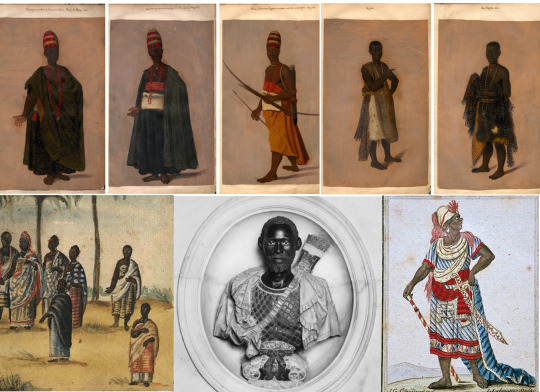
THE ERSYR
The Ersyr is based off of Iran. We don't get to see much of the Ersyr in Priory, but Chassar would likely wear Ersyri fashions even when away from home. For Iran, the 1500s puts us at the beginning of the Safavid Empire. The reference images below are from the 1570s to the 1650s.
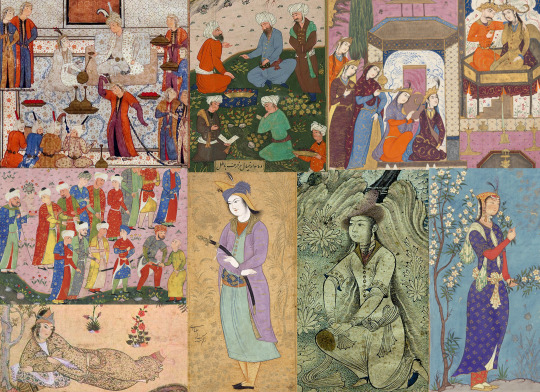
For Fallen Night, the eleventh century would be the Abbasid Caliphate. Below are images of artwork from that era to give a general sense of the styles during that period.

If anyone has any additional information or corrections about the fashions from these time periods in this countries that they would like me to add to this post, feel free to send me an ask or a DM. Thanks for reading! Looking forward to reading A Day of Fallen Night later this week. :)
#priory of the orange tree#day of fallen night#the roots of chaos#historical fashion#historical clothing#neph.txt#neph analysis
252 notes
·
View notes
Text
Advice for artists and non-artists but mainly just artists
You know how you do a thing for so long that it’s becomes super mundane and insignificant to you, like when you’re sewing something you just do a basic stitch and struggle to tie a standard knot at the end. But you don’t do this often enough for it to stand out to you. You’re an artist, hey maybe even a professional one, and you’ve been doing your art a certain way for a long time. You use pose references and look up environment pictures to reference. But you still draw shoes without a reference or you draw clothes without any detailed folds.
At various points in my art journey I tried using tutorials, resources, and step by step guides for drawing certain things, be that nature brushes, drawing noses front-on, etc. and my skills at the time were kinda basic so I could never really pull off the tutorials in a way that satisfied me. I then went years just improving on broad areas like perspective and posing, focusing more on the overall composition than the minor details. But one day, years later, I got bored and decided to look up how to draw clothing folds
On the left of the green line is some previous work, on the right was two pieces I drew after I heavily referenced cloth physics

Ignore the shading, lighting, colors, etc. the stuff on the right definitely has way better flow than the stuff on the left. Now it wasn’t like a “wow I used a reference and now I’m a master” situation, there was an adjustment period with some less than stellar examples

But when I created those first 2 folds it was like a fucking switch was flicked in my head and I’ve been improving ever since. I am immensely grateful that I just happened to go looking for reference photos because holy shit something as simple as improving my clothing folds massively boosted my confidence in my work. Something I’ve noticed after I followed tutorials is that during the adjustment period, while the first couple of pieces are very reminiscent of the source tutorial, they start to get a little too far off and I stop referencing the tutorial and start doing my own thing (for better or for worse), but there’s then a period afterwards where I go back (maybe after re-watching the original tutorial) and develop it more into my own style.
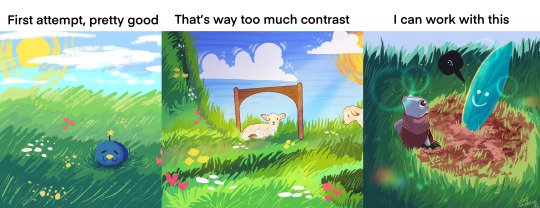
Here’s a graph to better explain my thought process
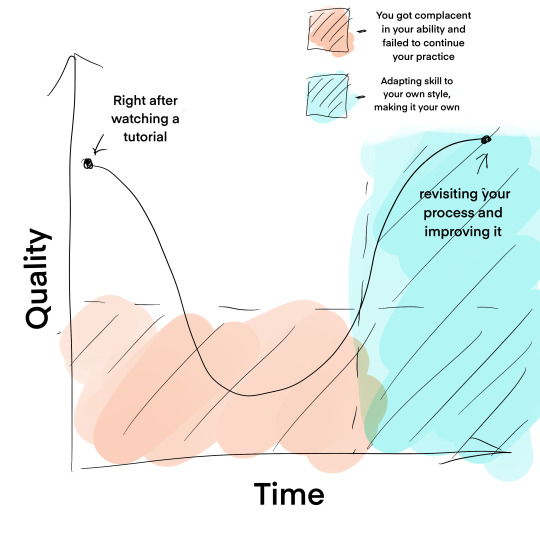
Here’s another gun to the head reminder to use references. Recently I was drawing shoes for a character and I have a pretty consistent method of drawing shoes (consistent, not good).
But I wanted it to look more rugged so I looked up an image of a hiking boot and guess at what point in this timelapse that the reference was pulled up
I had for years tried using tutorials and reference photos but the process never really clicked for me. But over the years I have improved my technical skills and I believe that those improvements and all that practice made it way easier for me to understand and replicate tutorials, i understand now how the specifics of certain things like shading and depth work, picking up new skills that are still in the area I work in became way easier. But Im obviously still finding areas in my art by random chance that I can improve on. Because I don’t think about those parts anymore, they’re in the background of my design process.
This is where my advice to non-artists comes in. Look up tutorials. For anything. You know earlier when I mentioned sewing? Look up a guide on stitching, I just learned today what a surgeons knot is despite having been hand stitching for years. You don’t know what you don’t know, you don’t seek out improvement when you don’t perceive the need to improve. Trust me, there’s always areas to improve but you are going to have to stretch your mind at some point to recognize them. Everybody talks about how you should use tutorials and use references and all that, but I don’t think many people are going to research tutorials for things they don’t feel like they need improvement in.
. Anyway that’s the end of my monthly psa
If something in this post confused you feel free to send me like an ask or a brick through my window with a note attached to it, I’m not picky.
#somewhat art related#art tutorial#art help#art advice#psa i guess#long post#no alt text#ask to tag#advice for artists
131 notes
·
View notes
Text
Heyyyyyy…. I got a math test in like 2 days and I’m like 3 chapters behind… so ya. I’ll be gone for longer periods of time with less output till I can get my stuff together. (Already do that but eeeee.)
Todays plushie is of a pc from @rttnpnkpmpkn
I was trying to make the doll more simple. The dolls i usually make are for pretty purposes only so they wouldn’t be used for making the doll (inspo? Yes, but the company would need to redraw into a simple and clearer form to actually be usable.)

The hair has more defined lines for it to be able to have the embroidery lines put there. I was doing more research on dolls recently so I’ll talk about stuff more below.
Doll break down below
Braids, animal traits (just any limbs that aren’t the usual base, even elf ears), braids, multi color hair, complex embroidery, and other stuff will cost extra with companies. I never really brought up what is and isn’t part of the initial cost. Usually the price you pay is for 1. The design they make with you and 2. The doll itself. The doll will not be clothed as that is extra (an entire outfit for them is usually around 20 dollars) and will not have a skeleton (makes them posable) unless extra is payed. What I design for is the usual 20cm dolls but there are more the exist. The second most common is 10cm, they are used for keychains or as a child for the 20cm dolls (from what I’ve seen people do). Dolls with things like animal ears, elf ears, tails, wings, etc usually have 20-30 dollars added on to the original pricing. Big body mods such as spider bottom half, octopus bottom half, longer limbs, etc, generally large changed to the body are both hard to find pricing for and hard to find customs of. There are premade dolls that are like this but having one made personally is something I have seen as of yet so I have no reference for it. Also a know most doll makers sell the clothes and also have custom clothes on their stores as well. 10cm is usually 70-80 dollars while 20cm is 100-200. Buying around the holidays gives opportunities for discounts on websites like Etsy.
Why did I bring up the extra limb thing and body mod? Well a lot of DOL characters have large chest and I was thinking for a while on how that would work on these dolls. For past dolls I’ve been doing different things, not doing the chest, just putting embroidery for chest lines, or drawing them on. So I decided I wanted to actually see if this was possible. Probably is!
Drawing wise I’d say I put to much detail on the bell. It’s kind of funny so I didn’t change it but I’ll do a more simple one next time I do a doll in the ‘drawn for manufacturing’ style. Also I don’t know whether or not I made the eyes too wide? I picked a reference photo where the character was very small and far away (not a good move on my part).
6 notes
·
View notes
Note
Hello! I'm currently reading through your amazing backlog of fics, and you are such a compelling and excellent writer. Fan fiction writers add an air of anachronism to anything historical that generally disrupts the flow and takes the reader out of the story, but I never get that when reading your work. As someone who wants to get into writing AC fan fiction, do you have any tips for maintaining historical accuracy? I tried using the games for details but found their info to be lacking. Thanks!
Thank you, thank you. ❤️🥺🥰❤️🥺🥰
Not to sound like a broken record, but research, research, and more research. I won't sugarcoat it because it takes a lot of time to dig around for good sources about certain historical periods, and more often than naught, I find those in scholarly journals or historical texts themselves. Find historians who specialize in a certain period of history. I like Roel Konijnendijk for Ancient History, and, for example, I’ve read the Histories by Herodotus for my Assassin’s Creed: Odyssey stories, especially the long fics. (Just ask @mrsragnarlodbrok, she knows how crazy I can get when looking into historical stuff for fics, even if it's literally almost a PWP, lol.)
Watch documentaries and listen to trusted podcasts about history! You'll absorb a surprising amount of information just by listening (I often have some sort of documentary on in the background when I'm working from home—the HistoryHit YouTube and related channels are all great places to start looking, especially for Greek-Roman stuff).
Even though it is difficult to remove the influences of modern morals, standards, and ethics from my worldview and writing, I try my utmost to be true to what would have been commonplace for the societal views and standards within the respective eras — that means someone living in Saxon England is more than likely going to be a Christian and live by what the Church says until the plot potentially demands otherwise!
It's also vital to understand the limitations of the knowledge and technology of the time you're writing for. One of the most egregious faux pas I can think of in this respect that I’ve seen repeated (whether it be for historical fiction or fanfiction) comes with wound treatment and care — in a world without proper sanitation and antibiotics, things like gut wounds would almost always be fatal.
Speaking of wound care, look for old medical books and accounts of battlefield treatments (e.g., the American Civil War era) to know how things would have been treated. Looking into the native vegetation from an area and digging around for any medicinal properties can help you construct your own types of authentic (perhaps not accurate, though) cures. This plays into my next point, don't be afraid to make reasonable extrapolations!
Diction! Language matters. Modern language and slang will distract from the overall authenticity of the story if not done with moderation or intent. Sure, you don’t have to go back to Ye Olde English, but make sure you’re picking words that fit, especially in the dialogue, and that there is consistency. Something that helps me write for the Gilded Age (late 1800s) is reading letters people used to write one another. In general, I feel tossing in a few swears (like fuck) now and then won’t kill the mood so much, but if you can find period-appropriate swears, then even better! This is a case where reading historical documents and texts can help.
Don’t overlook the small things! The small things can help create a sense of authenticity. This can be something like understanding the fabrics and dyes available during a certain time period and the style of clothing that was common (and how these differed between classes). A commoner in the Viking period wouldn’t have silk pillows or “mounds of silk” on their beds. Are certain foods available during the time period you’re writing for? Potatoes are probably the worst offenders for this.
One last thing is just watching historical/period films and TV shows. Often, there are common bits of misinformation or tropes you can start to spot once you start researching that don't really fit—once you spot those, don't do it (unless there's a very good reason for it)!
I’m sure I’m just scratching the surface, but these are the key ideas and philosophy that guide me when writing fics for historical (and fantasy based on historical eras — Game of Thrones) times. In the end and given the nature of the fandoms I write for, I personally strive for authenticity over true accuracy.
#sierra replies#anonymous#writing tips#also just practice practice practice#the more you write the better you'll feel#and like for me i absolutely stink at writing anything post Edwardian era
9 notes
·
View notes
Text
How much of Vale’s design was inspired by my favourite Hazbin design? Weeelllll


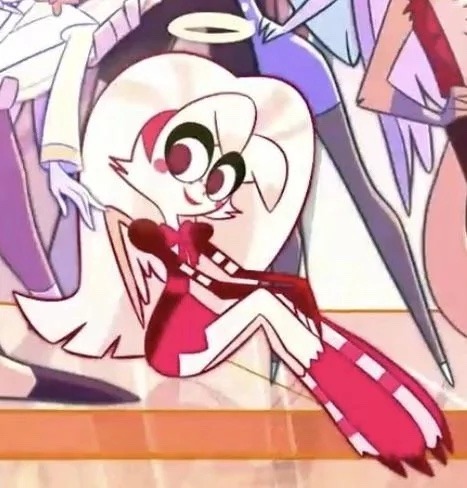
You can see the vibes
It’s just been taken in a vampiric goth bat direction over a strawberry lemonade vintage spider vibe
And I do mean it genuinely when I say Molly’s design is my favourite, that’s probably shocking to say considering she is a background no speaking role character, but it’s not even about her character it’s her design
She’s one of the few Heaven Characters who’s brighter colour scheme I actually adore and prefer to the dark jewel tones of hell
And I loved her OG overcomplicated design too! Very business women but still cute energy
And Gosh her Hair??? Her HAIR??? So big and fun and fluffy
Heck I love the design so much I’m willing to forgive how inaccurate it is to the time she was alive
Well kinda.
No but Viv why does she have a hairstyle from the 60’s?? why is her dress so short?? THE TWINS ARE FROM THE 40’S that skirt length would be a big NOPE
Maybe I’ll be extra generous and say Molly updated her look as time passed on earth in heaven, sure let’s go with that and not Viv just taking design elements/aesthetics without really thinking about them yet again
(Haha pained historian sounds)
Before anyone says anything Vale is dressing in sub culture fashion anyways, they’re also from the 2000’s so dressing with clothes or hairs that are dated is fine because those styles have already happened
Molly if her human design keeps the same hairstyle and dress doesn’t get that same pass because she’s from a time period before that hairstyle was a thing and before shirt dresses were more common
Anyways ignore this/me I’ve yet to fully research all the fashion from those era’s in a true deep dive like I want to but-
Ohhhh Boy when I do
Ohh the amount of posts I’m gonna make about Hazbin’s designs that is going to make the fandom really mad at me
#hazbin hotel#hazbin hotel molly#molly dust#hazbin oc#hazbin hotel oc#hazbin original character#hazbin hotel design#fashion history
4 notes
·
View notes
Note
🤔 What is the hardest part of writing fic?
&
💻 Do you do research for your fics? What’s the deepest dive you’ve done?
🤔 What is the hardest part of writing fic?
This will sound flip, but….writing it? Yes, sometimes the words sort of fly out of me onto the page and I’m basically just trying to keep up typing fast enough to capture what my brain came up with, but that’s more often not the case. A lot of times I’ve spent a fair amount of time envisioning scenes (while driving, while walking, while showering) that come up movie-style in my head, but then when I go to describe that interaction on the page either it’s not quite as poignant or affecting as it was when I had envisioned it, or it’s a great standalone scene but hell if I know how to get the characters there or what the hell they’re going to do AFTER they do that perfect scene I’d come up with. Or sometimes I start writing it and I get to that moment I’ve envisioned and I’m like “this person would never actually do this / say this.” Because humans (and other sentient beings one might find in Star Wars) very often don’t say the perfect thing in the moment, and they react differently than I might script them to, and sometimes they surprise me (and themselves?) a bit by doing something they wouldn’t normally do but will do when their guard is down / their guard is up / they’re with someone they trust / they’re in a traumatic situation / they’re struggling with who the hell they even are anymore / they’re comfortable in a way they hadn’t been before etc.
Oh, and writing the positioning of people’s bodies when they’re kissing or fighting. That’s another hard thing to write. Especially for love / sex scenes because you’re trying to make sure you’re describing things people’s bodies actually DO, and then if it’s supposed to feel good for the characters you want it to be something this person would actually enjoy in the moment, and there’s always a limb in the way or a height difference (Leia, you are so damn short and Han is so damn tall). And let’s face it, the practicalities of a sex scene (how we’re getting clothes off, for instance, or which way bodies are turning) are often not super sexy to read about, but if you don’t handle them in some way I always feel like the reader is going to be taken out of the scene anyway, wondering how their clothes evaporated off of them or how the hell they can enjoy this leaning up against some hard surface on the Falcon.
💻 Do you do research for your fics? What’s the deepest dive you’ve done?
I don’t do research in terms of researching Earth time periods or political movements or things like that. What I do often do is spend an inordinate amount of time down various rabbit holes on Wookieepedia. Sometimes this is deeper research (I’m looking for a character or event I could use for a plot I have in mind, or I need to know more about a character’s backstory so I can use that as a shortcut to understanding them a bit better, or I need to know how the Alderaanian succession crisis played out because I’m interested in where Bail and Breha or Leia would be coming from on something, or I want to know more about the kinds of things Han or Luke or Leia would have been exposed to growing up, or I need some info on ships they’d be using or trying to steal or whatever). Sometimes it’s my ridiculous brain insisting that even though the planet name I need is for a mission we are literally going to mention only in passing in the fic, that it’s imperative that I use the Galaxy Planet Map and Wookieepedia to find the ‘right” planet for this mission (can’t have too much of an Imperial presence, has to be somewhere humans live and have some kind of reason they would go there, etc). Ditto for “I need the name of a fruit someone is going to eat” or “I need a tool someone is going to use that isn’t a hydrospanner” or the like.
Deepest dive I’ve done would probably be me preparing to write some flying scenes (with X-wings, and later with the Falcon) in The Solo Girls, because I don’t normally write a lot of battle scenes and I wanted them to not suck. Plus I was trying to portray that Jaina and Rey and the older Rogues are excellent pilots. So I reread some parts of the X-wing novels (the Aaron Allston ones, because he has more of the balance of action and characterization that is what I was going for, as opposed to more technical descriptions), and looked up flight terms that pilots would use, and watched excerpts from Star Wars battle scenes and from movies like Top Gun or Iron Eagle on YouTube. At the end of the day I didn’t actually end up using much of what I watched and read, but I think it did give me a better sense of what I like to read and what I care about in the scene, which was helpful.
The other deeper dive I tend to do a lot is looking up slang terms or phrases in the GFFA, as well as using the Coruscant language translator (where you can translate things to and from Old Corellian, Mando’a, Huttese, and a few other languages, although I generally use it primarily for Corellian), so I can make up Corellian toasts and things Han Solo would say in bed.
Ironically, despite all this research, sometimes if I’m not satisfied with what I’ve found I’ll just make something up anyway. “Eh….you know what, they’re just going to eat space oranges, screw it.” “I’ve decided the flex capacitor is a thing.” “That story from Legends is stupid and creepy, so I’ve decided that didn’t happen, but I’m still going to use that character.”
Thank you for the ask!
Fanfic ask game
#ask lajulie#fanfic ask game#writing#writing problems#writing is hard y’all#writing research#or just the eternal Wookieepedia rabbit hole#there is some wack stuff that happened in Legends#but it is pretty funny to read about#Star Wars#space oranges#thank you for the ask!
5 notes
·
View notes
Text
When one thinks of 'Dances with Wolves,' visions of vast plains and the untamed beauty of the American West come to mind. This film, a cinematic masterpiece directed by and starring Kevin Costner in 1990, is revered not only for its storytelling but also for its meticulous attention to period detail and iconic style. As an aficionado of both fashion and film, I've long been captivated by the way this movie communicates character through costume, how each thread woven into the garments tells a story of culture, identity, and journey. Diving deeper, the film's costume design is a feast for the sartorially inclined. It's an extraordinary blend of historically influenced Native American attire and the military uniforms of the period. The film's ability to transport viewers to the era is largely due to the well-researched and executed costume design by Elsa Zamparelli. The authenticity of the garments adds a layer of realism to the film that's both educational and enchanting. As a movie buff and style enthusiast, I've always found myself drawn to the intersection where cinema meets fashion. 'Dances with Wolves' offers a unique opportunity to explore this crossroad. The characters’ outfits are not just pieces of clothing; they are extensions of their personas, carrying the weight of their stories and the spirit of their experiences. It's time we take a closer look at the style of these legendary characters and understand what makes their outfits so memorable. Kevin Costner as Lieutenant Dunbar Lieutenant John J. Dunbar, portrayed by Kevin Costner, is the epitome of a U.S. Army officer stationed on the frontier. His attire evolves throughout the film, reflecting his journey from a soldier to a man embraced by the Sioux tribe. Initially, we see him in his military regalia, which includes a few key elements: Blue Union Army Coat: The coat's rich color is a symbol of his allegiance and is adorned with yellow cavalry piping, signaling his rank. Forage Cap: The cap is a staple of his uniform, often seen atop his head in the early scenes. Tan Breeches and Boots: These are practical for his life as a cavalry officer, well-suited for riding and the rough conditions of the frontier. As Dunbar becomes more integrated with the Sioux, his style morphs to reflect his newfound identity. He adopts elements of the Native American attire, blending his military background with his adopted culture. It's a visual representation of his changing allegiances and the duality of his character's journey. Mary McDonnell as Stands With A Fist Mary McDonnell's character, Stands With A Fist, has an equally compelling style narrative. Her outfit is an amalgamation of her white American origins and her life with the Sioux tribe. As a woman who has traversed two worlds, her clothing is symbolic of her personal history: Buckskin Dress: The soft, earth-toned dress speaks to her assimilation into the Sioux way of life. Beadwork and Accessories: Intricate beadwork and traditional accessories such as bone hair pipes in her braids underscore her adopted heritage. Moccasins: As part of her daily attire, these demonstrate a connection to the land and the practical lifestyle of the tribe. Her style is a poignant reminder of her resilience and the bridging of two cultures. It's a powerful visual cue to her strength and unique position within the narrative. Graham Greene as Kicking Bird Kicking Bird, the tribe's medicine man played by Graham Greene, exudes wisdom and a deep connection to the spiritual world through his attire. His outfit is a testament to his role within the Sioux community: Robe with Earth Tones: Often seen in a robe that features natural colors, symbolizing his role as a spiritual guide and his connection to the earth. Feathers and Fur: These elements are not only indicative of his status but also serve as spiritual symbols within the Sioux culture. Ornate Necklaces: His neckwear often includes sacred symbols and materials, further emphasizing his spiritual significance.
Kicking Bird's wardrobe is a window into the soul of his character, one that speaks volumes about his importance to the Sioux people and his relationship with the world around him. Rodney A. Grant as Wind In His Hair Rodney A. Grant's character, Wind In His Hair, is defined by his fierce loyalty and warrior spirit, which is mirrored in his clothing. His outfit is both functional and indicative of his role as a warrior: War Shirt: Typically made of hide and often decorated with elements that signify personal achievements and status. Leggings and Breechcloth: As a warrior, mobility is key, and his attire facilitates this necessity. War Bonnet: Although not worn throughout the entire film, when it appears, it's a powerful symbol of his prowess and standing within the tribe. Wind In His Hair's attire is a visual representation of his courage, status, and the respect he commands within his community. Floyd 'Red Crow' Westerman as Ten Bears Floyd 'Red Crow' Westerman, who portrays the wise chief Ten Bears, is adorned in garments that reflect his leadership and venerable position. His outfit includes several key elements that denote his status: Elaborate Headpiece: This is a sign of his role as chief and often includes feathers, which are symbols of honor and bravery. Decorated Robe: His robe is likely to feature distinguished patterns or symbols, denoting his wisdom and experience. Medallions and Necklaces: These often carry spiritual or historical significance, embodying his role as a keeper of the tribe's traditions. Ten Bears' style is not just about appearance; it's a narrative of his life, leadership, and the reverence he holds within the Sioux culture. Tantoo Cardinal as Black Shawl Tantoo Cardinal's Black Shawl offers a glimpse into the everyday life of a Sioux woman. Her clothing is practical yet adorned with cultural significance: Long Dress: Her dress would typically be made of hide or trade cloth, practical for daily tasks yet adorned with tasteful beadwork. Shawl: A garment indicative of her name, it serves both a practical and ceremonial purpose. Jewelry: Though subtle, her jewelry is a nod to her femininity and status within the tribe. Black Shawl's attire is an elegant reflection of her role as a woman of the tribe, one that balances functionality with cultural expression. Robert Pastorelli as Timmons Robert Pastorelli's portrayal of Timmons, the somewhat coarse wagon driver, brings a different sartorial perspective to the mix. His outfit is a nod to the rugged individuals who helped settle the West: Worn Hat: His hat is battered and beaten, symbolizing the harsh realities of life on the frontier. Dusty Coat and Trousers: His clothes are practical, made to withstand the rigors of his occupation. Boots: Heavy-duty and worn, they are essential for his life on the move. Timmons' outfit is less about style and more about survival, a testament to the tough and often overlooked characters who populated the American frontier. Overview of 'Dances with Wolves (1990)' Aesthetic The aesthetic of 'Dances with Wolves' is a tapestry of cultural authenticity and historical accuracy. Each costume is a thread in the fabric of the story, meticulously chosen to represent the era and the people it portrays. Elsa Zamparelli's work as the costume designer is nothing short of breathtaking in its scope and detail. It's a portrayal that does more than just dress the characters; it helps to bring them to life. The film's visual narrative is a dance of colors, textures, and symbols. From the military blues and golds of the Union uniforms to the earthy tones and intricate beadwork of the Sioux clothing, each palette and pattern holds meaning. The film's attention to detail extends to the smallest of accessories, each chosen for its symbolic value or practicality. Moreover, the 'Dances with Wolves' aesthetic is an embodiment of the environment in which it's set. The clothing is not only period-appropriate but also attuned to the landscape, the climate, and the lifestyle of the characters.
It's a holistic approach to costume design that immerses the audience in the world of the film, a world where fashion is both an art form and a means of survival. Styling Tips for Different Occasions: Emulating the 'Dances with Wolves' Look Embracing the 'Dances with Wolves' aesthetic can be a stylish homage to the film and an exploration of historical fashion. Whether you're attending a themed event or just looking to incorporate some frontier flair into your wardrobe, here are some styling tips for different occasions: For a Casual Outing: Incorporate Earth Tones: Choose pieces in natural colors like browns, greens, and tans to mimic the earthy palette of the Sioux attire. Layer with Textures: Add depth to your outfit with layers of different textures – think leather, suede, and woven fabrics. Accessorize with Native American-inspired Jewelry: A turquoise necklace or silver cuff can add a touch of the film's aesthetic without being costume-y. For a Formal Event: Military Chic: A fitted navy blazer with gold accents can give a subtle nod to Lieutenant Dunbar's military uniform. Elegant Beadwork: Opt for a dress or clutch with intricate beadwork for a sophisticated take on the Sioux embellishments. Structured Boots: A pair of well-crafted leather boots can elevate your outfit while paying tribute to the practical footwear of the era. For a Themed Party: Go for a Full Look: If the occasion calls for it, don't shy away from embracing a full character-inspired ensemble, complete with replica pieces and detailed accessories. Balance is Key: Remember to balance your outfit to avoid looking like you've walked off a movie set – unless that's the intention! DIY Details: Adding your own beadwork or fringe to an existing piece can be a fun and personalized way to get the look. How to Dress Like a Legend: Get the 'Dances with Wolves' Look To dress like a legend from 'Dances with Wolves,' one must understand the essence of each character's style. It's not about copying the outfits piece by piece, but rather capturing the spirit of the characters through modern interpretations of their iconic looks. Here's how you can channel the legendary style of the film's characters into your own wardrobe: For the Dunbar Effect: Look for structured jackets with a military bent. Think double-breasted coats with brass buttons, paired with sturdy boots. To Emulate Stands With A Fist: Choose soft, flowing fabrics and incorporate Native American-inspired patterns or accessories into your look. For a Kicking Bird Vibe: Embrace natural materials like leather and feathers in your accessories. Consider pieces with symbolic meaning or spiritual motifs. Channeling Wind In His Hair: Opt for bold, statement pieces that reflect a warrior spirit – perhaps a leather cuff or a vest with fringe detailing. To Reflect Ten Bears' Wisdom: Wear items that have a story, such as vintage jewelry or a handcrafted belt with a unique buckle. Inspired by Black Shawl: Look for understated elegance with long dresses or skirts that feature subtle native prints or beadwork. Capturing Timmons' Ruggedness: Rely on durable fabrics like denim and canvas, and don't be afraid of a little wear and tear – it adds character! Summary of Outfits and Where to Find Them Compiling the iconic looks from 'Dances with Wolves' into a modern wardrobe doesn't require a time machine or a trip to a costume shop. Many contemporary designers and brands draw inspiration from historical styles, making it easier than ever to incorporate elements of these legendary characters into your attire. Here's a summary of outfits and where to find similar pieces: Historical and Western Wear Specialists: There are retailers that specialize in reproduction garments from various historical periods, including the American frontier era. Native American Artisans and Craftsmen: To ensure authenticity and support indigenous communities, seek out pieces created by Native American artists. Vintage and Thrift Stores:
You can often find military-style garments or native-inspired pieces that can be adapted to fit the aesthetic. Mainstream Fashion Retailers: Many contemporary brands incorporate elements of historical or cultural fashion into their collections, so keep an eye out for pieces that fit the bill. Custom Tailors and Designers: For a truly unique piece, consider commissioning a custom garment that pays homage to the film's style. Conclusion: The Lasting Impact of 'Dances with Wolves' on Fashion 'Dances with Wolves' has left an indelible mark on the world of cinema and fashion alike. Its portrayal of the American frontier and the cultural tapestry of the time period has inspired designers and fashion enthusiasts for decades. The film's character analysis and style breakdown serve as a testament to the power of costume design in storytelling and the enduring allure of historical fashion. As we dissect the iconic outfits and translate them into modern style tips, it's clear that the aesthetic of 'Dances with Wolves' transcends time. Whether you're dressing for a special occasion or simply looking to infuse a touch of cinematic grace into your everyday look, the film offers a wellspring of inspiration. Embracing the legendary looks of 'Dances with Wolves' is a journey in itself – one of appreciation for the past and creative expression in the present. And as we continue to explore the intersection of film and fashion, let us not forget the impact that a well-crafted garment can have on the legacy of a character. I invite you to share your unique style tips in the comments and revisit us for the latest updates on fashion advice and exclusive deals! Whether you're looking to dress like Kevin Costner as Lieutenant Dunbar, emulate the elegance of Stands With A Fist, or channel the wisdom of Ten Bears, your insights are invaluable. Join the conversation and let's celebrate the timeless style of 'Dances with Wolves' together.
0 notes
Note
I am currently in the first stages of a new writing project. It will be historical fiction set during WWII. Any advice you can offer on writing engaging and compelling fictional characters while staying true to that period of history would be greatly appreciated.
Creating Engaging Historical Characters
There's this tendency to think of people in the past as being completely foreign beings to us, but here's the thing... they weren't that different. Sure, their worlds were different. The societal rules, roles, and expectations were different. They had different technology and different opportunities, but so many of the things were the same. They still loved their families but fought with their siblings and pushed back against parental boundaries. They didn't want to do their chores or learn the things they were supposed to learn, but they did it anyway because they didn't want to get in trouble. They wanted to spend time with their friends, gossip about love interests, enjoy hobbies, and do the things they thought were fun. They wanted to tell stories and hear stories, and laugh, and try new things. They wanted to listen to music and dance and socialize. They wanted to dream about their future, and sometimes they stressed about it. They had their own "celebrity" role models, their own trends, their own versions of "social media" (even if it was writing letters or hanging out in a tavern), and they looked forward to a good party as much as most of us do. Except for the introverts. They preferred to stay home with their cats then just as we do now. You get my point, though. People in the past weren't that different from us.
So... writing engaging and compelling characters living during World War II is no different from writing engaging and compelling characters who live now, or in 1981, 1802, 1577, or 1112... Just write people. Research what their world was like... what societal rules governed their behavior, what their daily lives were like, what their love lives were like, what they did for fun, who and what captivated their interest, what they wore and how they styled their hair, what they liked to eat and drink, what social occasions looked like... and then remember that just as we push against the boundaries of our own world now, so did people in every point in history. If you asked someone to describe the fashion of the 2020s, they would describe specific clothing styles, but that doesn't mean people aren't wearing other things, too. If you asked someone to describe the popular music or dances of today, they'd name specific music styles, artists, or dance styles, but that doesn't mean everyone listens to that style of music, those artists, or dances in that style. There are always people on the fringe, always people doing other things. So just keep that in mind.
Happy researching and writing!
•••••••••••••••••••••••••••••••••
I’ve been writing seriously for over 30 years and love to share what I’ve learned. Have a writing question? My inbox is always open!
♦ Questions that violate my ask policies will be deleted! ♦ Please see my master list of top posts before asking ♦ Learn more about WQA here
29 notes
·
View notes
Text
DEFINITELY agree as a whole and with lots of Thoughts.
theres different levels to it, in my completely not an expert or professional opinion anyway. my expectation of ‘accuracy’ for a well funded, high status institution like a museum or university is MUCH higher than something like, a historical enthusiasts meet-up or a ren faire. None of these situations will have ‘perfect’ historical accuracy, because thats not possible, but there should certainly be much more effort and research put into some over others.
(i do certainly believe some area’s need to step it up in terms of accuracy tho, looking at you hollywood movie makers!! you have the god damn budget for it!!!)
I think the goal should usually be “as accurate i can be, within my means and within reason”. not everyone has the time or resources for a perfectly accurate hand sewn victorian era ball gown, we should not expect that of hobbyists. But if say, the MET is commissioning a historical recreation, they’ve got the coin to drop on that piece and it would be an amazing opportunity to learn more about the way it would have potentially been created way back when!
Something else to consider is that True Historical Accuracy isn’t actually POSSIBLE. Many materials and techniques have been completely lost to time, and working with a different type of material than what was Actually available for the time can greatly change the end product. Sometimes theres just not enough sources for a location or period. Sometimes the only sources are text to interpret. Sometimes sources are hard to understand or flat out wrong. And that doesn’t even account for outliers! All throughout history, there have been scores of people who do not abide by the fashionable dress of the age and all those people are part of the cultural landscape as well!
On top of that, all the best preserved examples we have for ‘accuracy’ are extremely biased. The best preserved Very Old garments are often those of white europeans, often of the upper class, due to general eurocentric colonialism and sense of superiority, as well as sometimes outright destruction of historical records from colonized places! It can be very hard to find any information at all on say, indigenous jamaicans before the settlement by europeans, mostly because they were killed and no one felt the need to preserve the culture of conquered peoples. History favors the winner, and our records of historical dress will always reflect this. ‘Accurate’ to whose perspective, who is writing the references? Not even to mention, most working class people we’re making or wearing garments that most considered worth preserving at the time. Medieval serfs and Jomon era rice field workers were not exactly thinking of the historic value of their work clothes hundreds of years down the line!
theres a dress maker and artist i’ve followed on tiktok (i’ll edit this and a link if i can find them, but tiktok’s search functions are almost as bad as tumblr’s 😅) who is recreating the style of clothing likely worn by freed south african women of the early/mid colonial period. Key word there, LIKELY, because so few references exist for this. Do we know what wealthy white women of the era wore? Yes, plenty of portraits, sewing guides, and even whole garments have been preserved. What about enslaved african women? Mostly yes also, because what depictions we do have of black women from that period in that region, most of them are of enslaved women. But free women, women who had worked and bought their freedom or been born into free families? MUCH fewer records exist, and what we mostly have to go on is what they Weren’t allowed to wear per colonial regulations.
this is just one specific instance of many where Even If the re-creator DID have the time, energy, and FUNDS to create such a piece, the references needed to do so simply dont exist.
AAAANYWAY tldr Op ur so right and u should say it. Accuracy is so much less important than committing faithfully and to the best of your ability to re-create the spirit and style of a by-gone era
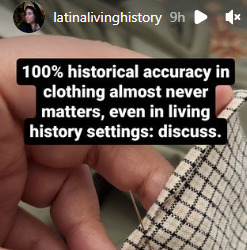
I have a lot of opinions on this but I would love to know what other people think.
340 notes
·
View notes
Text
A bio for Logan

1. The Basics
Name - Lena Logan Lockwood, But everyone calls me Logan
Age - 24
Place of birth - Cold Creek, VT
Current place of residence -hmm… I guess Luvartt, WA become my “homebase” but I still travel A LOT
Nationality- I’m native Hawaiian on my dad’s side
Education- Well I’ve technically dropped out of college to process my internship full time as my career.
Occupation - Yup! I’m a field researcher for the Smith Scholars’ Archives, or just the Archives, as the full title’s a bit of a mouthful.
Marital status - Ha! Dating but not married
2. Physical Appearance
Height - I am five five
Build - Muscular, toned. I don’t mean to beg, but I keep active regularly. Jog every morning, stretches, weights. Heath, haha, Heath calls me a goddess cause I bench pressed him that one time as a joke.
Eye color - Well one a cool blue, the other eye’s been MIA for a couple of years now behind the scar tissue.
Hair color - Natural? Dark brown. But it has been dyed navy blue for some time now. Or if you’re Emery it’s “Polynesian blue” but I think it’s a little dark than that, and is really just a way to give me a sassy nickname
Do they have any distinguishing marks? (tattoos, scars, birthmarks) - Well I already said I have the scar which covers my right eye, well more accurately the right side of my face, as there are thin branches of the scar that creeps over my lips and cheek. I have a handful of scars all down my right side really, but my face and leg I would say have it the worst. And then I have a tattoo on my left arm and shoulder, traditional Hawaiian tribal. My Grandmother helped me with the design and meaning.
What style of clothes do they prefer to wear? -hmm…? Modern explorer? Got my duck boots as my go-to footwear. Pair of warm socks, hiking pants, active tee, and my malbec hiking vest.
Do they wear glasses or contacts? - A monocle actually. Haha, nah just kidding. While I clearly don’t have perfect vision, eyewear or prescription contacts won’t help my situation.
Do they wear accessories or not? - Sometimes, I wear my exercise gloves all the time. I don’t know why… just a habit by now. And I have ear piercings and an industrial bar in my left ear
What is their level of grooming? - I shower when I can, I do a lot of camping and traveling from my job. And sometimes that means being in the middle of a forest or other habit for extended periods. And while I love the dirt and grass, a good shower after those long assignments is enjoyed.
3. Communication
Do they gesture compulsively, or is it only occasional? - Maybe just a little more than occasionally. But I wouldn’t say compulsively.
Do they make eye contact or do they move their gaze around? - I try my best but I still struggle with knowing which eye to look at when I’m talking to someone else. It’s hard with a 2:1 ratio. Haha, joking again.
What is their catchphrase? - I say “Jeezum Crow” a lot. Actually my Vermont witticism tend to make a lot of people laugh.
Do they ever curse? - Despite the fact I say things like Jeezum Crow, yeah I swear. My step-ma was in the Navy, of course I cuss like a soldier, I was raised by one.
Do they have a speech impediment? - only when I’ve had too much coffee. But then again there’s no such thing as too much coffee.
How do they laugh? Do they make other people laugh? - Do I laugh? Haha, of course I laugh! And I'm a master of puns, so I intend to make others laugh. But I’ve been told my jokes are pun-ishingly bad.
What is their smile like? - I’ve been told it's genuine and understanding, sweet. I’ve also been told that it would look nicer if I did something about the scars.
Are their emotions easy to read or do they hide them? - I wouldn’t say I had my emotions, but I have a relatively calm exterior. And I’m in no way out of touch with my emotions, I just have a good handle on reeling them in the negative ones and not letting them hurt me or others when they come about.
What is their default expression? - Calm joy?
4. Background and Past
Where did they grow up? Do they still live there? - I grew up in Cold Creek, VT. I don’t live there anymore, but I still love the little town. I go back for holidays.
What education do they have? What subjects did they study? - Ha. well… I dropped out of my college when my internship offered me a full time position. But before that I was studying Anthropology, with my focus being on the importance of superstitions, occult beliefs, ‘monsters’ and the like in different cultures.
How was their childhood? Were they neglected, sheltered, raised well? - Oh my childhood was good. Having a step-mom was not awful like every fairytale would make you think. It was pretty normal. When I was seven I became an older sister, when Lucas was born.
Were they involved in any extracurriculars as a child? (sports, dance, clubs, etc.) - Yeah! I was the high school softball star as the shortstop. I was also on the cross country team.
What are some of their happiest, saddest, and earliest memories? - Well a happy memory I have, is I remember my family taking a day trip to Lake Champlain. And I swear. I SWEAR that I saw Champ that day. Nobody believed me ‘cept my Grandma. Saddest. Hmm… ok… ok. It was the second weekend in April of my senior year of High School. I had taken my brother, Lucas, to go see a movie. He was ten at the time, and although I knew he wasn’t allowed to ride in the front seat, after the movie he really really wanted to ride up front with me. He had been really good when we were out. Um… Lucas had behavior troubles. Outing could often overwhelm him and he was prone to outbursts. but on our trip to the theater, he had no problems. He was super chill, enjoyed the movie and our time together. I could tell that if I tried to argue with him that he couldn’t ride in the front passenger seat, it would spiral into something bigger than it needed to be. So I said he could. As I was driving up home, I was going through a green light on a busy intersection; a drunk driver behind the wheel of a 16 wheeler rushed through his red light, T-boned our car on the right side. Lucas was killed on impact they said. The shattered glass and metal tore up my face and I guess took out my right eye too, and when EMT’s got there, the car was so crushed and bent, my right leg, though it was said it was completely shattered by the looks of it, had to be amputated below my knee to get me out of the wreckage. … It took me some time to get over that guilt. Feeling like I was not responsible for Lucas’s death. That if I had stood my ground and told him to sit in the back this may not have happened. It would be an understatement to say the crash didn’t turn my world upside down.
What were they like as a child? -I was sorta spoiled. I was an only child for seven years of my life. Having a baby brother introduced after years of being the center of attention is a shake up. I didn’t hate Lucas, but I’d be lying if there wasn’t some resentment in those first few years.
6. Likes and Dislikes
Favorite and least favorite food - I live for coffee, my guy. And tiramisu, best dessert ever. Not a big fan of red cabbage.
Taste in music - Hmm… My tastes are pretty wide. Not a country or rap fan though.
Do they follow sports or are they indifferent? - Love sports. Again I was a Softball queen in my high school years. I had scholarships, until the car crash… But I kept training and working out after I got out of the hospital. I’m in, if not better, shape than before the accident. And while I didn’t make college teams, I started club sport softball in college. I have loved baseball since I was young. I’ve sorta gotten Heath into it, but I think he likes getting to go to the stadium over watching at home.
Do they like to read? - heck yeah! Reading’s great. I’m brain and brawn in one! Perfect balance.
What car do they drive? - I chariot a 1974’s Ford Bronco, seafoam green. It is my home on the go.
7. Psychology
Are they an introvert or an extrovert? - An extrovert I guess?
What are they afraid of? - Being useless, I guess. After my accident, doctors thought that I wouldn’t be able to “live a full life” because of losing my eye and leg… well mostly because of losing the leg. I just heard a lot of, you won’t do this, and you can’t do that. And even, knowing that I have proved them wrong. There still that lingering doubt? Just in the back of my brain, small but somehow constant?
What is their idea of happiness? - Sitting in a little wood cabin in the middle of woods on a snowy eve by the fire with a hot cup of coffee.
Where is their favorite place in the world? - I’ve traveled so much, jezzums it’s hard to pick. Vermont is always gonna have a special place in my heart, honestly.
Do they desire power? - Hmm. No, just power over my own body. Well, control not power, maybe.
Are they a leader or a follower? - A little of both. I think it’s important to be able to be both. To know when to take a step back and let somebody else take the reigns, but also know when you have to forge your own path, or go against the grain of somebody else’s word, when it’s not right.
8. Family
Name - Dad (Ok really bad, I haven't named either of Logan’s parents…)
Age (or age they died at if deceased) - 49
Explain the relationship they have with your character – So my dad raised me after my bio mom just left? I never knew her, dad said he was a little miffed by her leaving the two of us. But My dad has been great, always spoiled me, loves me with everything that he has, one of my biggest supports. Couldn’t ask for a better parent.
If they are grown and out of the house, how often do they see their family members? -I still see him when I go back to Cold Creek. Though I don’t get around there as often as he may like, we’ll always be on good terms.
Name - Step mom
Age (or age they died at if deceased) - 51
Explain the relationship they have with your character – My step-ma came into my life when I was maybe two? She was always cool. It was a little strange when she and my dad got married, I think because I already thought they were? She’d been a little more strict with me than my pops, but it’s nothing more than parental concern. And she doesn’t really think of me as her own kid and she is my mother.
If they are grown and out of the house, how often do they see their family members? - Same with my dad, I see her when I get to come back to Cold Creek, but I think she’s better with the whole ‘long gasp of time’ between visits cause she was in the Navy.
Name - Grandma Lena
Age (or age they died at if deceased) - 78
Explain the relationship they have with your character – My Grandma Lena is also one of my biggest supporters. She also spoiled me, encouraging me in all my interests through the years, especially my love of cryptids. She was the only one who would “indulge” my talk of the “silly creatures” when my mom said they couldn’t possibly exist. I realized it now because my grandmother knew, as I now know. She’s also inspired my more adventurous side, though I don’t know if I’ll ever live up to her. She texted me this morning before my jog that she had an early morning skydiving course and to wish her students luck. I still don’t know if that was a joke, and frankly I'm too scared to ask.
If they are grown and out of the house, how often do they see their family members? - I surprisingly see grandma a lot more than my other family members. There’s this strange occurrence where I’d enter a locally owned bookshop and she behind the counter.
Name - Lucas
Age (or age they died at if deceased) - 10
Explain the relationship they have with your character – Again despite Lucas being my half brother, I fully loved him, and yeah at first there was some resentment from me when he was born that was me just being spoiled. When we found out he had special needs I think is when my tune towards him really switched. I wouldn’t say that I felt like I had to be his protector…. More like his best friend, make sure he was ok in school and stuff. Stuck up for him when others at school were being mean. … That sounds like I was bullying children younger than me. I didn’t, I just made sure the teachers or parents were aware that Lucas was being treated unfairly by others.
If they are grown and out of the house, how often do they see their family members? - Well, I don’t see him anymore. But I have it on good authority that he’s started to enjoy the afterlife.
Name - Zombie
Age (or age they died at if deceased) - 7
Explain the relationship they have with your character – Zombie is my service dog and traveling companion. I got him when I went away to college. I was having some difficulties living away from home due to the accident, both physically and emotionally, but I felt like I needed to live on campus. I don’t know why, maybe I felt like I had to prove something to myself or to all the nah-sayers. Zombie helped with getting myself ready in the dorm, could open doors for me, carry stuff. Guess you could say he was an extra set of paws? But I also just bounded with him, to just have an emotional companion, who was there.
If they are grown and out of the house, how often do they see their family members? - Zom’s with me all the time. Except when he is cheating on me with Heath. Those to awful boys. Hahaha.
9. Relationships
Which of their friends are they closest to? - Mhm, a toss up between Zombie and Heath, really.
Do these “best friends” know each and every detail of their life, or are they somewhat guarded even around those closest to them? - I think Zombie knows every detail of my life, though if he understands it is another question. Heath, I’m pretty sure knows everything, he’s super easy to talk to and he is kind and wise beyond his years. I am admittedly guard about the car accident, really around anybody. I just - don’t enjoy talking about it…
Outside of their inner circle, are there other significant friendships? - Work wise, my boss/mentor is Boucmen. Then there’s Skid Jones and Atari. Skid and I are both Atari’s… hmmm… guinea pigs, in a way, for his bionic prosthetics. When I started to work for the Archive, I guess one of the perks was “hey weren’t gonna fit you with a custom prosthetic leg, made by our tech magician” and I legit mean tech magician, he has some magical sway of technology. Since I work in the public eye normally my prosthetic is mostly vanilla, bionic ankle, built in private wifi. An option to use all the power for one super kick. Skid however, he- well he doesn’t have prosthetics as they are wired into his body. So he, and Atari, are typically cyborgs… Anyway, Skid's whole lower half are bionic legs made for him to run, he is a speedster, aka, he had the superhuman ability to run super fact, but years ago a manic wanted to see if the power came from the legs themselves or from Skid. spoiler it came from Skid. So now Skid has these powerful metal bird legs, like that of an ostrich or crane. He looks sorta odd, his knees bending the opposite way, but he loves them.
Which social media platforms do they have a profile on? How active are they? Or, do they reject social media? - I have the usual, facebook, instagram, snap. But my activity on it waxes and wanes
10. Residence
Do they live in a big or small house? Or another type of residence entirely? (Perhaps something you made up for the world you’ve created). - If we are going off of time spent, I think I live in my car with how much I travel around the country.
Are they friendly with their neighbors? Or do they live far away from any other people? - I’m as friendly as can be to any neighbors I may have on my travels, or stays anyway. Though there are the people across the street from Heath, who no matter how nice you may be to them, they will refuse to be neighborly in any sense,
Are they happy where they live or do they have plans/desires to move soon? How long have they lived there? - I would like to settle down, but also… I do love my pseudo-nomadic life. So I don’t know… I could see myself doing “van life” but I think Heath is married to staying in Luvartt. I don’t know, there’s stuff to be talked over.
Do they keep things tidy or is it always a mess? What color are their walls and are they decorated? - I’m an organized mess. If I’m not cruising around in my Bronco and I’m somewhere “permanent” for a time, my notes and pages sorta spread over all the surfaces. It looks like one of those stereotypical mystery boards, but on a desk and without red string, typically without red string.
11. Job
What is it? - Field researcher for the Archives
How long have they been there? - since my junior year of college, when I dropped out.
Is it what they want to do as a career or is it a temporary situation? - Yeah, I mean, it’s sorta a life long position. Or life long employment? If I don’t turn evil or abuse the Archives’ vast collection of knowledge.
Have they reached their peak or is there still room for advancement? - I guess there’s room for advancement. There’s a lot of work possibilities in the Archives. And I think Boucmen would like to see me in a higher position at some point? But I’m sorta just happy collecting information and accounts through my research.
What is their salary? Is it enough for the lifestyle they want? - Yeah the salary is really good. Basically as a full time researcher, the Archives, and specifically Boucmen as he’s my sponsor and mentor, pays for everything. Gas, lougings, food, everything. But I have to turn in everything I find and learn in my travels. I’m actually very thankful that Boucmen it the one who I hand everything over to, as he is very understand about the concerns I have about submitting information or testimony with some of my contacts more private details.
Do they like what they do or would they prefer something else? - Oh I love what I do! Cause of working for the Archives everything I believed as a kid. About Cryptids and folklore, I know it’s all true! It all really exists! But it also means that this world is really dangerous and there are many things that go bump in the night. But those things are also super rich with their own ways, and lifestyles. Which is what I actually research.
Are they good at their job? - God, I hope so! If I wasn’t, I really wouldn’t have even considered dropping out of school. Also probably wouldn’t be offered the job?
What hours do they work? - Technically it’s 24/7. I'm always on the clock.
Is their job secure or are they in danger of losing it? - Unless I decide to use the Archive’s knowledge to intentionally inflict harm, or misuse it, I don’t think Boucmen would fire me. Being his mentee and being employed by him, he’s the only one who can dismiss me, and as he is the founder of the Archives, no one is above in the organization. So as long as me and him are on good terms, I’m not in danger of losing my job. Though I would be afraid of what happens being fired from a super secret organization that collects knowledge of the paranormal and supernatural. Our quote on quote rivals, the Repository and the Templar, would kill their ex-employees. But Boucmen would be mortified if that was his organization’s termination strategy.
0 notes
Photo
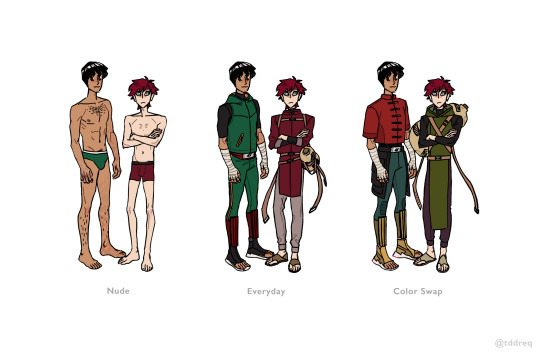
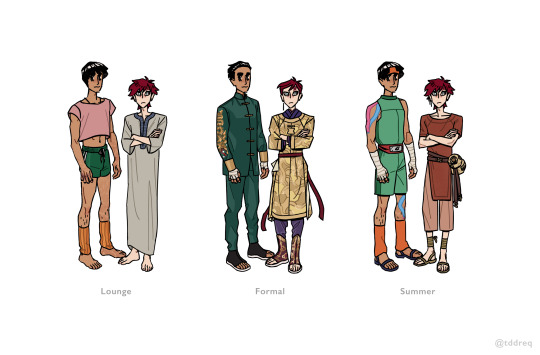
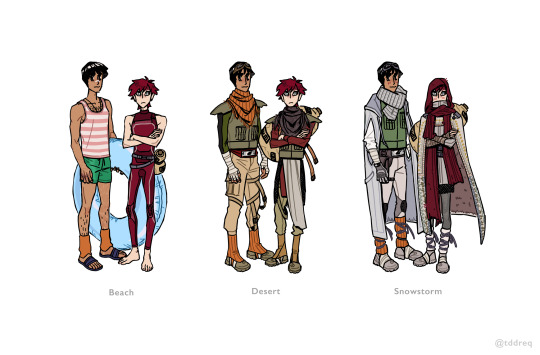
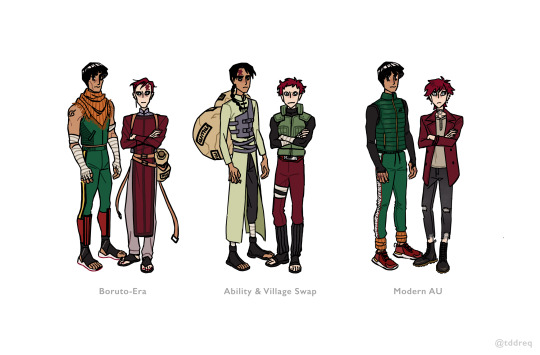
🌟Gaara & Lee in different outfits! 🌟
Edit: Some Context for the outfits
Nude
They’re in their 20s in these images.
I wanted to show Lee’s scars a little more prominently. They’re a mix of graph scars (from treatment for his left limbs) as well as cuts and bruises closer to his fists.
Gaara is skinny but has a tummy. He doesn’t work out.
Everyday
I usually draw them wearing non-canon clothes because both boys’ style peaked when they were teenagers (not a fan of the clothes from the Blank Period nor Boruto-era).
Lee finds tights of the same material as the one Gai gave him but in different colors. Not a fan of the leg warmers so I made shin guards. Lee asked Tenten to make them for him, as they contain heavier weights. Each plank is removable and can even be transformed into nunchaku like in the Crescent Moon movie.
I wanted to draw Gaara in a harness. I don’t need to explain myself. I also like the idea of extra straps in case he needs to carry larger items. They flow in the wind. It’s cute. I also had him wear lighter color pants instead of his usual black because I’m personally a fan of red with gray rather than red with black lol.
Color Swap
They’re wearing each other’s colors—pretty self-explanatory.
I like Lee’s color combo a lot! I also gave him a skirt-pouch-thing to change the silhouette up a bit.
Gaara will still occasionally carry the larger gourd, depending on the situation. He’s wearing toeless babouches (they can’t be normal closed-toe shoes) (this is Naruto).
Lounge
BRINGING BACK THE CANON PINK CROP TOP! KING ROCK LEE, AN ICON!! His style, if not Chinese-esque, is very 80’s so I gave him 80’s short shorts. He’s wearing the original leg warmers Gai gave him because they’re something of a comforting item.
Gaara is wearing a kaftan. He looks more like an everyday Sunan, no longer in combat clothes.
Formal
I gave the shirt Lee wore to Naruto’s wedding a little more flair by adding an embroidered dragon (one on each sleeve). His hair is pulled back because. Sexy.
Gaara’s hair is a bit more tamed down, but still has some flyaways. It will never be subdued. I’ve been putting him in various earrings for previous outfits but chose to give him one single long one here. I originally had WAY more but they would look like they’re dragging his face down so just one. One edgy earring.
I thought of putting Gaara in a more traditional outfit worn for special occasions by people IRL who live in deserts, but research is tough and also… I don’t want to appropriate any culture by not knowing enough/anything. I want to know more though! I just don’t know any in-depth websites. So! Instead, I (Vietnamese-American) had him wear a Vietnamese Long Bào, a bright yellow robe worn by emperors. I modified some things like sleeve length and took away dragon patterns for ones more fluid-looking, like sand dunes or the wind. Again, toeless shoes because this is Naruto. I also didn’t give him a hat/crown because I’m personally not a fan lmaooooo. I got all of this info from a bilingual (Viet & English) book called Weaving a Realm. I don’t know if it’s available online, the last time I checked was a year ago. I had my aunt mail a copy to me lol
Summer
Ice cream-colored clothes for Lee! And athletic tape, because this is my one chance to show him wearing them and also I like the lines They Look Cool. The outfit’s obviously based, again, on the Crescent Moon movie.
I gave Gaara more flow-y pants and took forever trying to think up a shirt. I also gave him a boat-neck collar to show his collarbones… Lee is sweating. Also! The earrings come back! This was a pretty plain outfit so I gave him three dangling earrings for a bit of pizzazz. It’s again, only on one side because I like to think he’s That Edgy Kid but also to counter the visual weight of the gourd.
Beach
Let’s go to the beach, beach…
BIG POOL FLOATY FOR LEE!! I gave him a striped tank top as a reminiscent design to the striped unitard in the Crescent Moon movie’s ending, but inevitably had him wear swim trunks based on what he wore in Shippuden’s tenth ending.
Again, going on with the tenth ending’s design, I modified the design so it’d look more dynamic.
Desert
They’re both wearing Sunan flak jackets because the material is more suitable for desert missions than other village’s jackets. They also have shoe gaiters and shemagh scarves to cover their head and face. Both are wearing more subdued colors to blend a little more in with the environment.
Lee has goggles to protect his eyes but Gaara’s sand armor has that covered for him. So why does Gaara still wear the scarf? Hair in his eyes… Can’t see shit…
Snowstorm
I don’t like the plain canon winter cloak design so I gave Lee something more sporty, like a hoodie, and Gaara something more… Grandma chic. There is cute plant embroidery on it! I’d like to think that he asked one of the women in his life to get him a winter cloak since he doesn’t know shit about the cold (clothes from the Five Kage Summit arc did not make sense, those are now un-canonized). I’m thinking Temari, Matsuri, or Shijima. Most likely Shijima. I’d like to think she likes fucking with the kazekage as subtly as possible so she got him something cute. She knows Gaara won’t have a care in the world nor understand the inherent cuteness of plant embroidery. Other people will know and if someone dares say something, she hopes to be there when they get a Stern Cold Look from Gaara. She’s… a little evil and I love that.
Boruto-Era
Lee’s ill-fitting onesie and Gaara’s haircut were hate crimes to the LGBT+ community.
I cut Lee’s onesie into two and gave the vest some padding by his ribs. He no longer wears a headband since Ino invited everyone to get a Konoha leaf tattoo with her. Only Kiba, Tenten, and Lee came along. Naruto also came but he also still wears his headband along with the tattoo. Also, can you tell he’s put on a little more muscle?
I gave Gaara a modified Aó Dài, as I’ve done this entire time, and kept it long so the length is similar to the canon double-breasted jacket that I hate. Gaara also has painted nails! They’re just red but if I’d made a zoom-in of his hands and feet, the nail polish is visibly smeared and obviously done by a child...It was Shinki. He wants to work on his hand-coordination to finely and minutely control puppets like Kankuro so Gaara lets him do this. Everyone in the world thinks it’s adorable.
Ability & Village Swap
Drawing skinny Rock Lee and manlet Gaara felt wrong. It felt wrong.
Lee keeps his style before meeting Gai, the frog-clasp shirt and braided hair. His personality, deep inside, is still the same. He’s still serious, hardworking, and kind. This is not to say that one’s environment does not affect one’s personality and core being, because it does! But to keep them still /them/, it’s important to keep these traits. This is fiction, I can do what I want, but if you asked me these uhhh sociological (?) questions outside of this context, I’d reply differently.
Baki, Kankuro, and Temari are still the same in their respective villages, as are Gai, Neji, and Tenten.
Gaara kept the haircut he had during the canon Chunin Exams arc. He still wears the spandex (under his jacket and pants) and leg warmers Gai got for him, but he dyed them black. Both Gaara and Lee’s sense of style is still the same. I don’t think Gaara would blindly follow and recreate everything Gai does, like canon!Lee does. He can’t do ninjutsu nor genjutsu and is very grateful for Gai’s teachings and encouragement, but Gaara’s not as… obsessive as Lee. Canon!Lee is something else.
Modern AU
I made Lee’s leg weights based more on actual leg weights. He still has cuts on his hands that he’s not shy about their appearance, but he hates it when people ask about them because he doesn’t want others to worry.
Gaara still fits into his pants that were handed to him down from Kankuro in middle school, his chicken legs never changing. He’s still a little bit punk, never growing out of it, hence his shoes and earrings. He wears a fine red peacoat to say “HEY LOOK I’M NORMAL, SEE??” And if you don’t know the story behind his choker, you can check my previous posts or stay blissfully oblivious.
-------
Thanks for reading all or part of this! I had a lot of fun writing my thoughts down. I also did not read anything over to make sure for any errors lmao...
3K notes
·
View notes
Note
I'm writing an AU of a movie that takes place in the 1880s USA, where a travelling white character and a Jewish character are waylaid by Native Americans, who they befriend. Probably because it was written by and about PoC (Jews) the scene actually avoids the stuff on your Native American Masterpost, but I'd still like to do better than a movie made in the 1980's, and I feel weird cutting them from the plot entirely. I have a Jewish woman reading it for that, but are there any things you (1/1)
2/2 1880s western movie ask--are there things you'd LIKE to see in a movie where a white man and a Jewish man run into Native Americans in the 1880s? I do plan to base them on a real tribe (Ute, probably) and have proper housing/clothes and so forth, but right now I'm just trying to avoid or subvert awful cowboy movie tropes. Any ideas?
White and Jewish Men, Native American interactions in 1880s
I am vaguely concerned with how you only cite one of our posts about Native Americans, that was not written by a Native person, and do not cite any of the posts relating to this time period, or any posts relating to representation in media.
Sidenote: if you want us to give accurate reflections of the media you’re discussing, please tell us the NAME. I cannot go look up this movie based off this description to give you an idea of what my issues are with this scene, and must instead trust that the representation is good based off your judgement. I cannot make my own judgement. This is a problem. Especially since your whole question boils down to “this scene is good but not great and I want it to be great. How can I do that?”
Your baseline for “good” could very well be my baseline for “terrible hack job”. I can’t give you the proper education required for you to be able to accurately evaluate the media you’re watching for racist stereotypes if you don’t tell me what you’re even working with.
When you’re writing fanfic where the media is directly relevant to the question, please tell us the name of the media. We will not judge your tastes. We need this information in order to properly help you.
Moving on.
I bring up my concern for you citing that one—exceptionally old—post because it is lacking in many of the tropes that don’t exist in the media critique field but exist in the real world. This is an issue I have run into countless times on WWC (hence further concern you did not cite any other posts) and have spoken about at length.
People look at the media critique world exclusively, assume it is a complete evaluation of how Native Americans are seen in society, and as a result end up ignoring some really toxic stereotypes and then come to the inbox with “these characters aren’t abc trope, so they’re fine, but I want to rubber stamp them anyway. Anything wrong here?”. The answer is pretty much always yes.
Issue one: “Waylaid” by Native Americans
This wording is extremely loaded for one reason: Native American people are seen as tricksters, liars, and predators. This is the #1 trope that shows up in the real world that does not show up in media critique. It’s also the trope I have talked about the most when it comes to media representation, so you not knowing the trope is a sign you haven’t read the entirety of the Native tag—which is in the FAQ as something we would really prefer you did before coming at us to answer questions. It avoids us having to re-explain ourselves.
Now, hostility is honestly to be expected for the time period the movie is set in. This is in the beginnings (or ramping up) of residential schools in America* and Canada, we have generations upon generations of stolen or killed children, reserves being allocated perhaps hundreds of miles from sacred sites, and various wars with Plains and Southwest peoples are in full force (Wounded Knee would have happened in 1890, in December, and the Dakoa’s mass execution would have been in 1862. Those are just the big-name wars. There absolutely were others).
*America covers up its residential schools abuse extremely thoroughly, so if you try to research them in the American context you will come up empty. Please research Canada’s schools and apply the same abuse to America, as Canada has had a Truth and Reconciliation Commission about residential schools and therefore is more (but not completely) transparent about the abuse that happened. Please note that America’s history with residential schools is longer than Canada’s history. There is an extremely large trigger warning for mass child death when you do this research.
But just because the hostility is expected does not mean that this hostility would be treated well in the movie. Especially when you consider the sheer amount of tension between any Native actors and white actors, for how Sacheen Littlefeather had just been nearly beaten up by white actors at the 1973 Academy Awards for mentioning Wounded Knee, and the American Indian Religious Freedom Act had only been passed two years prior in 1978.
These Native actors would not have had the ability to truly consent to how they were shown, and this power dynamic has to be in your mind when you watch this scene over. I don’t care that the writers were from a discriminated-against background. This does not always result in being respectful, and I’ve also spoken about this power imbalance at length (primarily in the cowboy tag).
Documentaries and history specials made in the 2010s (with some degree of academic muster) will still fall into wording that harkens Indigenous people to wolves and settlers as frightened prey animals getting picked off by the mean animalistic Natives. This is not neutral, or good. This is perpetuating the myth that the settlers were helpless, just doing their own thing completely unobtrusively, and then the evil territorial Native Americans didn’t want to share.
To paraphrase Batman: if I had a week I couldn’t explain all the reasons that’s wrong.
How were these characters waylaid by the Native population? Because that answer—which I cannot get because you did not name the media—will determine how good the framing is. But based on the time period this movie was made alone, I do not trust it was done respectfully.
Issue 2: “Befriending”
I mentioned this was in an intense period of residential schools and land wars all in that area. The Ute themselves had just been massacred by Mormons in the Grass Valley Massacre in 1865, with ten men and an unknown number of women and children killed thanks to a case of assumed association with a war chief (Antonga Black Hawk) currently at war with Utah. The Paiute had been massacred in 1866. Over 100 Timpanogo men had been killed, with an unknown number of women and children enslaved by Brigham Young in Salt Lake City in 1850, with many of the enslaved people dying in captivity (those numbers were not tracked, but I would assume at least two hundred were enslaved— that’s simply assuming one woman/wife and one child for every man, and the numbers could have very well been higher if any war-widows and their children were in the group, not to mention families with multiple children). This is after an unknown group of Indigenous people had been killed by Governor Brigham Young the year prior, to “permanently stop cattle theft” from settlers.
The number of Native Americans killed in Utah in the 1800s—just the number of dead counted (since women and children weren’t counted)—in massacres not tied to war (because there was at least one war) is over 130. The actual number of random murders is much higher; between the uncounted deaths and how the Governor had issued orders to “deal with” the problem of cattle theft permanently. I doubt you would have been tried or convicted if you murdered Indigenous peoples on “your” land. This is why it’s called state sanctioned genocide.
This is not counting the Black Hawk War in Utah (1865-1872), which the Ute were absolutely a part of (the wiki articles I read were contradictory if Antonga Black Hawk was Ute or Timpanogo, but the Ute were part of it). The first official massacre tied to the war—the Bear River Massacre, ordered by the US Military—places the death count of just that singular massacre at over five hundred Shoshone, including elders, women, and children. It would not be unreasonable to assume that the number of Indigenous people killed in Utah from 1850, onward, is over a thousand, perhaps two or three.
Pardon me for not reading beyond that point to list more massacres and simply ballparking a number; the source will be linked for you to get an accurate number of dead.
So how did they befriend the Native population? Let alone see them as fully human considering the racism of the time period? Natives were absolutely not seen as fully human so long as they were tied to their culture, and assimilation equalling some sliver of respect was already a stick being waved around as a threat. This lack of humanity continues to the present day.
I’m not saying friendship is impossible. I am saying the sheer levels of mistrust that would exist between random wandering groups of white/pale men and Indigenous communities wouldn’t exactly make that friendship easy. Having the scene end be a genuine friendship feels ignorant and hollow and flattening of ongoing genocide, because settlers lied about their intentions and then lined you up for slauther (that’s how the Timpanogo were killed and enslaved).
Utah had already done most of its mass killing by this point. The era of trusting them was over. There was an active open hunting season, and the acceptable targets were the Indigenous populations of Utah.
(sources for the numbers:
List of Indian Massacres in North America Black Hawk War (1865-1872))
Issue 3: “Proper housing/clothes and so forth”
Do you mean Western style settlements and jeans? If yes, congratulations you have written a reservation which means the land-ripped-away wounds are going to be fresh, painful, and sore.
You do not codify what you mean by “proper”, and proper is another one of those deeply loaded colonial words that can mean “like a white man” or “appropriate for their tribe.” For the time period, it would be the former. Without specifying which direction you’re going for, I have no idea what you’re imagining. And without the name of the media, I don’t know what the basis of this is.
The reservation history of this time period seems to maybe have some wiggle room; there were two reservations allocated for the Ute at this time, one made in 1861 and another made in 1882 (they were combined into the Uintah and Ouray Indian Reservation in 1886). This is all at the surface level of a google and wikipedia search, so I have no idea how many lived in the bush and how many lived on the reserve.
There were certainly land defenders trying to tell Utah the land did not belong to them, so holdouts that avoided getting rounded up were certainly possible. But these holdouts would be far, far more hostile to anyone non-Native.
The Ute seemed to be some degree of lucky in that the reserve is on some of their ancestral territory, but any loss of land that large is going to leave huge scars.
It should be noted that reserves would mean the traditional clothing and housing would likely be forbidden, because assimilation logic was in full force and absolutely vicious at this time.
It’s a large reserve, so the possibility exists they could have accidentally ended up within the borders of it. I’m not sure how hostile the state government was for rounding up all the Ute, so I don’t know if there would have been pockets of them hiding out. In present day, half of the Ute tribe lives on the reserve, but this wasn’t necessarily true historically—it could have been a much higher percentage in either direction.
It’s up to you if you want to make them be reservation-bound or not. Regardless, the above mentioned genocide would have been pretty fresh, the land theft in negotiations or already having happened, and generally, the Ute would be well on their way to every assimilation attempt made from either residential schools, missionaries, and/or the forced settlement and pre-fab homes.
To Answer Your Question
I don’t want another flattened, sanitized portrayal of genocide.
Look at the number of dead above, the amount of land lost above, the amount of executive orders above. And try to tell me that these people would be anything less than completely and totally devastated. Beyond traumatized. Beyond broken hearted. Absolutely grief stricken with almost no soul left.
Their religion would have been illegal. Their children would have been stolen. Their land was taken away. A saying about post-apocalyptic fiction is how settler-based it is, because Indigenous people have already lived through their own apocalypse.
It would have all just happened at the time period this story is set in. All of the grief you feel now at the environment changing so drastically that you aren’t sure how you’ll survive? Take that, magnify it by an exponential amount because it happened, and you have the mindset of these Native characters.
This is not a topic to tread lightly. This is not a topic to read one masterpost and treat it as a golden rule when there is too much history buried in unmarked, overfull graves of school grounds and cities and battlefields. I doubt the movie you’re using is good representation if it doesn’t even hint at the amount of trauma these Native characters would have been through in thirty years.
A single generation, and the life that they had spent millennia living was gone. Despite massive losses of life trying to fight to preserve their culture and land.
Learn some history. That’s all I can tell you. Learn it, process it, and look outside of checklists. Look outside of media.
And let us have our grief.
~ Mod Lesya
On Question Framing
Please allow me the opportunity to comment on “are there things you'd LIKE to see in a movie where a white man and a Jewish man run into Native Americans in the 1880s?” That strikes me as the same type of question as asking what color food I’d like for lunch. I don’t see how the cultural backgrounds of characters I have literally no other information about is supposed to make me want anything in particular about them. I don’t know anything about their personalities or if they have anything in common.
Compare the following questions:
“Are there things you’d like to see in a movie where two American women, one from a Nordic background and one Jewish, are interacting?” I struggle to see how our backgrounds are going to yield any further inspiration. It certainly doesn’t tell you that we’re both queer and cling to each other’s support in a scary world; it doesn’t tell you that we uplift each other through mental illness; it doesn’t go into our 30 years of endless bizarre inside jokes related to everything from mustelids to bad subtitles.
Because: “white”, “Jewish”, and “Native American” aren’t personality words. You can ask me what kind of interaction I’d like to see from a high-strung overachieving woman and a happy-go-lucky Manic Pixie Dream Girl, and I’ll tell you I’d want fluffy f/f romance. Someone else might want conflict ultimately resolving in friendship. A third person might want them slowly getting on each other’s nerves more and more until one becomes a supervillain and the other must thwart her. But the same question about a cultural demographic? That told me nothing about the people involved.
Also, the first time I meet a new person from a very different culture, it might take weeks before discussion of our specific cultural differences comes up. As a consequence, my first deep conversations with a Costa Rican American gentile friend were not about Costa Rica or my Jewishness but about things we had in common: classical music and coping with breakups--which are obviously conversations I could have had if we were both Jewish, both Costa Rican gentiles, or both something else. So in other words, I’m having trouble seeing how knowing so little about these characters is supposed to give me something to want to see on the page.
Thank you for understanding.
(And yes, I agree with Lesya, what’s with this trend of people trying to explain their fandom in a roundabout way instead of mentioning it by name? It makes it harder to give meaningful help….)
--Shira
#platypan#genocide#native american#North America#america#history#american history#media#representation#asks
293 notes
·
View notes